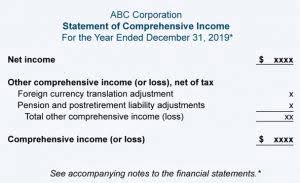
It was first enacted and authorized under the Internal Revenue Code in 1954, and it was a major change from existing policy. Double declining balance depreciation is an accelerated depreciation method that charges twice the rate of straight-line deprecation on the asset’s carrying value at the start of each accounting period. Bottom line—calculating depreciation with the double declining balance method is more complicated than using straight line depreciation. And if it’s your first time filing with this method, you may want to talk to an accountant to make sure you don’t make any costly mistakes. The declining balance method is one of the two accelerated depreciation methods and it uses a depreciation rate that is some multiple of the straight-line method rate.
How to calculate the double declining balance rate?
- For example, the depreciation expense for the second accounting year will be calculated by multiplying the depreciation rate (50%) by the carrying value of $1750 at the start of the year, times the time factor of 1.
- Although its specific use was personal and no depreciation was allowable, you placed the home in service when you began using it as your home.
- The numerator (top number) of the fraction is the number of months (including parts of a month) the property is treated as in service during the tax year (applying the applicable convention).
- Qualified property must also be placed in service before January 1, 2027 (or before January 1, 2028, for certain property with a long production period and for certain aircraft), and can be either new property or certain used property.
However, if this dual-use property does represent a significant portion of your leasing property, you must prove that this property is qualified rent-to-own property. Qualified rent-to-own property is property held by a rent-to-own dealer for purposes of being subject to a rent-to-own contract. It is tangible personal property generally used in the home for personal use. It includes computers and peripheral equipment, televisions, videocassette recorders, stereos, camcorders, appliances, furniture, washing machines and dryers, refrigerators, and other similar consumer durable property. Consumer durable property does not include real property, aircraft, boats, motor vehicles, or trailers. Once you elect not to deduct a special depreciation allowance for a class of property, you cannot revoke the election without IRS consent.
Full-Month, Mid-Month, Mid-Year, Mid-Quarter Conventions
They must now figure their depreciation for 2023 without using the percentage tables. To help you figure your deduction under MACRS, the IRS has established percentage tables that incorporate the applicable convention and depreciation method. These percentage tables are in Appendix A near the end of this publication. You begin to claim depreciation when your property is placed in service for either use in a trade or business or the production of income. The placed in service date for your property is the date the property is ready and available for a specific use. If you converted property held for personal use to use in a trade or business or for the production of income, treat the property as being placed in service on the conversion date.

How do I record depreciation using the Double Declining Balance Method in my financial statements?
Uplift does not furnish an automobile or explicitly require you to use your own automobile. However, it pays you for any costs you incur in traveling to the various sites. The use of your own automobile or a rental automobile is for the convenience of Uplift and is required as a condition of employment.

Inclusion Amount Worksheet for Leased Listed Property
The business part of the cost of the property is $8,800 (80% (0.80) × $11,000). Also, qualified improvement property does not include the cost of any improvement attributable to the following. Generally, this is any improvement to an interior portion of a building that is nonresidential real property https://www.bookstime.com/articles/is-bookkeeping-a-dying-profession if the improvement is placed in service after the date the building was first placed in service. To qualify for the section 179 deduction, your property must be one of the following types of depreciable property. The following are examples of a change in method of accounting for depreciation.
What is the DDB depreciation method?
However, a new business brings the responsibility of managing the fundamental and technical aspects of marketing, finance, etc. You will have to learn about the intricacies and functioning of these key divisions that will drive your company’s growth. Get instant access to lessons taught by experienced private equity pros and bulge bracket investment bankers including financial statement modeling, DCF, M&A, LBO, Comps and Excel Modeling. When you’re a Pro, you’re able to pick up tax filing, consultation, and bookkeeping jobs on our platform while maintaining your flexibility. Get $30 off your tax filing job today and access an affordable, licensed Tax Professional.
Current Account: Definition and What Influences It – Investopedia
Current Account: Definition and What Influences It.
Posted: Sun, 15 Oct 2023 07:00:00 GMT [source]
- However, Dean’s deduction is limited to the business taxable income of $80,000 ($50,000 from Beech Partnership, plus $35,000 from Cedar Partnership, minus $5,000 loss from Dean’s sole proprietorship).
- Your use of the mid-month convention is indicated by the “MM” already shown under column (e) in Part III of Form 4562.
- If the result of dividing the number of days in the tax year by 2 is not the first day or the midpoint of a month, you treat the property as placed in service or disposed of on the nearest preceding first day or midpoint of a month.
- On the same date, the property had an FMV of $180,000, of which $15,000 was for the land and $165,000 was for the house.
The second section, Depreciable Assets Used in the Following Activities, describes assets used only in certain activities. The safest and easiest way to receive a tax refund is to e-file and choose direct deposit, which double declining depreciation securely and electronically transfers your refund directly into your financial account. Direct deposit also avoids the possibility that your check could be lost, stolen, destroyed, or returned undeliverable to the IRS.




















